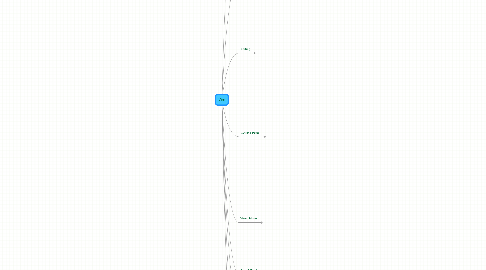
1. Cursor Movement
1.1. h,j,k,l
1.2. ctrl-f = page up
1.3. ctrl-b = page down
1.4. % = jump to matching brace
1.5. w = jump to end of words (punctuation)
1.6. W = jump by words
1.7. e = jump to end of words (punctuation)
1.8. E = jump to end of words
1.9. b = jump backward by words (punctuation)
1.10. B = jump backward by words
1.11. 0 = start of line
1.12. ^ = first character of line
1.13. $ = end of line
1.14. gg = go to first line
1.15. gd = go to def of the function or var under the cursor
1.16. [N]G = go to line N or last line
1.17. fx = move the cursor forward to the next occurrence of character x on the current line
1.18. ; = repeat last f command
1.19. tx = like fx but move right before the character
1.20. Fx = move the cursor backwards to the next occurrence of x
1.21. ) ,(= move the cursor to next, previous sentence
1.22. * = Read the string under the cursor and go to next occurrence
1.23. # = same as * but goes to previous occurrence
1.24. `. = Go to line last edited
1.25. Screenwise
1.25.1. H = move the cursor to the Highest line on the screen
1.25.2. M = move the cursor to the Middle of the screen
1.25.3. L = move the cursor to the Lowest line of the screen
1.26. Bookmarks
1.26.1. ma = Make a bookmark name a at the current cursor position
1.26.2. `a = Go to bookmark a (backtick, not single quote)
2. Insert Mode
2.1. i = insert mode at cursor
2.2. I = insert at the beginning of line
2.3. a = append after the cursor
2.4. A = append at the end of the line
2.5. o = open blank line below current line
2.6. O = open blank line above current line
2.7. Esc = exit insert mode
2.8. Completions (type a few chars then)
2.8.1. ctrl-n = next completion
2.8.2. ctrl-p = previous completion
3. Editing
3.1. r = replace a single character (!insert mode)
3.2. J = join line below to the current line
3.3. cc = change an entire line
3.4. cw = change to the end of word
3.5. c$ = change to the end of line
3.6. s = delete character at cursor and substitute text
3.7. S = delete line at cursor and substitute text
3.8. xp = transpose to letters
3.9. u = undo
3.10. ctrl-r = redo
3.11. . = repeat last command
3.12. ~ = switch case
3.13. g~iw = switch case of current word
3.14. gUiw = make current word uppercase
3.15. guiw = make current word lowercase
3.16. >> = indent line one column right
3.17. << = indent line one column left
3.18. == = auto-indent current line
4. Cut and Paste
4.1. dd = delete (cut) a line
4.2. dw = delete the current word
4.3. x = delete current character
4.4. X = delete previous character
4.5. D = delete to end of line
4.6. yy = yank (copy a line)
4.7. 2yy = yank (copy) 2 lines
4.8. yw = yank word
4.9. y$ = yank to end of line
4.10. p = put the clipboard after cursor/current line
4.11. P = put the clipboard before the cursor/current line
4.12. ]p = put the clipboard at the proper indentation
4.13. "a = use a register named a for the next yank/paste operation
5. Visual Mode
5.1. Marking Text
5.1.1. v = start visual mode
5.1.2. V = start linewise visual mode
5.1.3. ctrl-v = start blockwise visual mode
5.1.4. o = move to other end of marked area
5.1.5. U = upper case of marked area
5.1.6. O = move to Other corner of block
5.1.7. aw = mark a word
5.1.8. ab = a block with parens (braces)
5.1.9. aB = a block with brackets (curly braces)
5.1.10. ib = inner () block
5.1.11. iB =inner {} block
5.2. Commands
5.2.1. > = shift right
5.2.2. < = shift left
5.2.3. y = yank
5.2.4. d = delete
5.2.5. ~ = switch case
6. Search/Replace
6.1. /pattern = search for pattern
6.2. ?pattern = search backwards for pattern
6.3. n = repeat search in same direction
6.4. N = repeat search in opposite direction
6.5. :s/old/new/g = replace all old throughout file
6.6. :s/old/new/gc = replace all old with new and confirm each one
7. Exiting
7.1. :w = save
7.2. :wq = save and quit
7.3. :x = save and quit
7.4. :q = quit, but failed if unsaved
7.5. :q! = quit
8. Multi-File
8.1. :e filename = edit a file in a new buffer
8.2. :bn = go to next buffer
8.3. :bd = delete a buffer (close file)
8.4. :sp fn = open a file in new buffer and split window
8.5. ctrl w - window commands
8.5.1. ctrl-w s = split window
8.5.2. ctrl-w w = switch windows
8.5.3. ctrl-w q = quit a window
8.5.4. ctrl-w v = split windows vertically
8.6. Tab Commands
8.6.1. :tabe fn = edit file in new tab
8.6.2. gt = next tab
8.6.3. gT = previous tabs
8.6.4. :tabr = First tab
8.6.5. :tabl = Last tab
8.6.6. :tabm [N] = move current tab after tab N
